



By Megan Hamby, Editorial Director
Last week, I received a call from my son’s day care director: He had been directly exposed to COVID-19 and his class would be closed for two weeks. I was, of course, immediately worried about my son’s health. But, for a moment, I felt overwhelmed at the thought of working from home for two weeks with a 3-year-old.
But when a friend asked if I was taking any time off while my son was home, I explained that I had not even considered it—because I knew Hammock would be flexible with my schedule. There were no complaints from my coworkers when my new 3-year-old intern joined the weekly Zoom staff meeting, or uproar when I needed to step away for an hour or so to prepare lunch and get him ready for naptime. We did what we always do: We adapted to the situation at hand.
When COVID-19 forced us to switch to a work-at-home arrangement in March 2020, we adapted to Zoom meetings and Basecamp chat messages. When a client asked us to press pause on all previously planned content last year and focus instead on coronavirus-related content, we quickly switched gears and developed a new content plan. Over the past year and a half, we have helped our clients rethink in-person events and conferences; change their content strategies; and build relationships with their customers.
Flexibility has long been part of our work culture at Hammock—even before the pandemic. For example, I worked at home two days a week before it became mainstream. One of our project managers even works in another state! I believe this culture of flexibility and adaptability is part of what has made us efficient at responding to our clients’ changing needs. We don’t let challenges get in our way—we simply find a way to work around them.
But flexibility in itself―in scheduling, physical work location, technology use or anything else―is not enough if you don’t have the fundamental skills in place to do the job the right way in the first place. At Hammock, as we have weathered moves, personnel changes, shifting economic conditions and more, we have never abandoned our core principles and skills. Even before the pandemic, we had the processes and platforms in place to help our clients succeed and achieve their goals. We have always been storytellers at heart, and what we excel at is learning our clients’ “stories” (and bits of hard-earned wisdom) and helping communicate them to a target audience in the most relevant and useful way possible.
We’re not the only ones who have adapted, of course. We have learned from others, and we hope that others have learned from us. And while adapting while staying true to your purpose can be a bit of a balancing act, we believe that we have found the right balance. If we can help you adapt to these continually challenging times, please reach out to us.
Photo: Getty Images
About Hammock Healthcare Idea Email | This post is part of Hammock’s award-winning Idea Email series. Idea Emails are sent every other week and share one insightful marketing idea. Idea Email comes in two flavors: Original and Healthcare. To subscribe to the original Idea Email (general marketing ideas), click here . To subscribe to the Healthcare Idea Email (healthcare marketing ideas), click here.

By Rex Hammock, CEO
However, according to recent research, including studies from Google, AARP and the Pew Research Center, the reality is that older adults are buying, using and mastering:
In reality, people in their 60s and 70s are buying more technology—and more know how to use it.
Photo: Getty Images
About Hammock Healthcare Idea Email | This post is part of Hammock’s award-winning Idea Email series. Idea Emails are sent every other week and share one insightful marketing idea. Idea Email comes in two flavors: Original and Healthcare. To subscribe to the original Idea Email (general marketing ideas), click here . To subscribe to the Healthcare Idea Email (healthcare marketing ideas), click here.
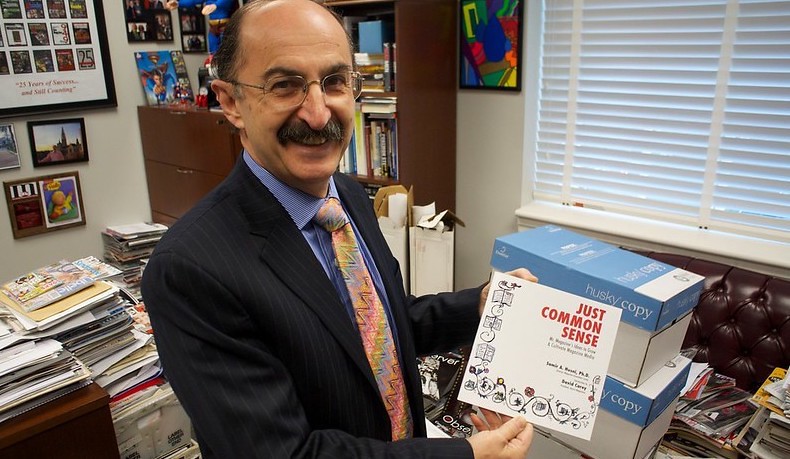
By Rex Hammock, CEO
I was recently asked about the future of print—specifically, magazines. Rather than start from scratch, I turned to an article written by my friend Samir Husni (better known as Mr. Magazine), the leading advocate of all things magazine. His thoughts were originally published as an opinion piece titled “Print: How do I love thee. Let me count the ways …” for FIPP.
Print is forever.
There is collectability and legacy to the printed page. Something that can last from the days of the Bible all the way to the 21st century and beyond. Print brings permanence and collectability. The Greek philosopher Parmenides believed that if you couldn’t hold it, touch it, feel it, it wasn’t real. The permanence of print then is very real.
Print legitimizes.
I have had many artists and writers tell me that they felt their work wasn’t legitimate until they saw it in print. And one editor after another who has told me that the celebrity on the cover of their magazine would agree to that picture only if it was on the cover of the print product. They never asked if they would be featured on their webpage, only the magazine’s printed page. Doesn’t that speak volumes about the validity of print?
Print is finite and has a purpose.
Just like human beings, print has a lifecycle. There is a time to be born and a time to die. It’s not the never-ending story or the 24/7 story. It has a first page and a last page. Knowing that it won’t go on forever on this plane of existence gives it an earthly purpose; whether that is to inform, educate or entertain, print has a reason for being around.
Print is like a good friend.
It doesn’t interrupt you while you’re reading it. There are no notifications, no bells and whistles going off, no dings or pings telling you something is trying to tear your attention from what you’re trying to do. It helps you focus on that horizontal projection of your eyes, and you retain what you read. Your attention is zeroed in on that article, that piece of content that you are reading, and you actually comprehend the words on the page.
Print provides a sense of ownership.
You own the print product; it’s in your hands. No one can take it away from you. You can throw it away, you can keep it, you can cherish it; no matter what type of relationship you want, you can have it, it’s yours. Try to get mad at something on the digital platform and see what happens. If you throw your phone across the room, you’ll have to buy another phone.
Print is a timesaver.
You might scoff at that, but it’s true. If it’s well-done, well-curated, well-vetted, you’re getting the content that you want and need and you can trust it. It’s tried-and-true. You don’t have to trigger Google to go in search of it yourself. Experts have done it for you and put it between the pages of the magazine or the book that’s in your hands.
And print provides a real relationship and connection that you can enjoy time and time again. Print has become a necessary partner in these days and times. You can only have so many digital one-night stands before you yearn for the real thing. That trusted and safe partner that gives you what you need when you need it.
With print, there is an audio/visual power that can’t be denied. When the story is good, you can see the love in her eyes. When the apple pie is fresh out of the oven and baked just right, you can smell it and long to taste it. And with a good piece of print apple pie, you are satiated and feel complete. There is no digital piece that gives you that same sense of realism of being there. When the words come alive you can actually feel the movement of the people on the page and it no longer is just content; it becomes an experience. And it becomes your uninterrupted “me” time.
If I’ve made you want to read a printed product, then I’ve achieved my mission with this love letter to print. There is nothing like it, nor will there ever be. You can create a million websites with a billion pixels on the screen, but it will never replace the thrill, satisfaction and love you can feel for your favorite print magazine or book.
Samir Husni, aka “Mr. Magazine,” is the founder and director of the Magazine Innovation Center at The University of Mississippi. His blog, Mr. Magazine, features interviews with the most prominent magazine media leaders in the United States.
Photo: Rex Hammock
About Hammock Healthcare Idea Email | This post is part of Hammock’s award-winning Idea Email series. Idea Emails are sent every other week and share one insightful marketing idea. Idea Email comes in two flavors: Original and Healthcare. To subscribe to the original Idea Email (general marketing ideas), click here . To subscribe to the Healthcare Idea Email (healthcare marketing ideas), click here.

By: Jeff Walter, Editor
You know that old trees just grow stronger
And old rivers grow wilder every day
Old people just grow lonesome
Waiting for someone to say, “Hello in there, hello”
— John Prine, “Hello in There”
Like countless Nashvillians and music lovers (we happen to be both), we mourned the loss of singer-songwriter John Prine to COVID-19 on April 7, 2020. Prine, also a Music City resident, released his self-titled debut album a half-century ago in 1971, gracing the world with such now-standards as “Sam Stone,” “Angel From Montgomery,” “Paradise” and “Hello in There,” that last song an unflinching first-person depiction of the loneliness suffered by many senior citizens (written with jaw-dropping empathy by a 22-year-old).
We think Prine would be happy about the way his family is remembering him—and doing some good in the process. “You Got Gold: Celebrating the Life & Songs of John Prine” is a series of special concerts and other events planned for various Nashville venues Oct. 3-10. Proceeds will benefit The Hello In There Foundation, newly established by Prine’s family “to honor his memory and continue the love, kindness and generosity he shared with the world.” The foundation’s mission is “to identify and collaborate with individuals and communities to offer support for people who are marginalized, discriminated against or … otherwise forgotten.”
Two Nashville-based nonprofits will receive this year’s inaugural grants from the foundation. Room In The Inn provides shelter, emergency services, transitional programs and long-term solutions to help homeless people rebuild their lives. Thistle Farms provides safe housing, healthcare, counseling and employment for women survivors of trafficking, prostitution and addiction.
The Prine tribute concerts, which wrap up on what would have been his 75th birthday, represent a beautiful example of content marketing, a frequent topic of the Idea Email. While they honor the memory of the beloved singer-songwriter (and perhaps sell some CDs and merch in the process), they also serve a higher purpose not directly tied to sales.
We have previously written about the various forms that content marketing can take—from blog posts and e-books to sales presentations and customer welcome kits, from onboarding material and internal letters to employees to bylined articles for industry publications and public events. Earlier this month, we discussed preserving your company’s or organization’s history and future. Thanks to the Prine family for an outstanding example of how this can work. And thanks to John Prine for all the timeless and wonderful music (along with the love, kindness and generosity).
Photo credit: Laura Fedele
About Hammock Healthcare Idea Email | This post is part of Hammock’s award-winning Idea Email series. Idea Emails are sent every other week and share one insightful marketing idea. Idea Email comes in two flavors: Original and Healthcare. To subscribe to the original Idea Email (general marketing ideas), click here . To subscribe to the Healthcare Idea Email (healthcare marketing ideas), click here.

By Rex Hammock, CEO
For the past few weeks, I have been reading about what marketers have learned throughout the COVID-19 pandemic. One of the most insightful articles I’ve read was “10 Truths About Marketing After the Pandemic,” written by Janet Balis and published in the Harvard Business Review.
Balis, the customer and growth market leader and marketing practice leader at EY Americas, does a great job of explaining how marketers—especially content marketers—are having to adjust their relationship to customers. In her article, she identified 10 ways in which the pandemic has challenged truths about marketing and given us new rules to move forward. Here, I’m highlighting three of those old truths and new rules.
Old Truth: Customers must sit at the heart of your marketing strategy.
New Truth: Customers must sit at the heart of your customer journey.
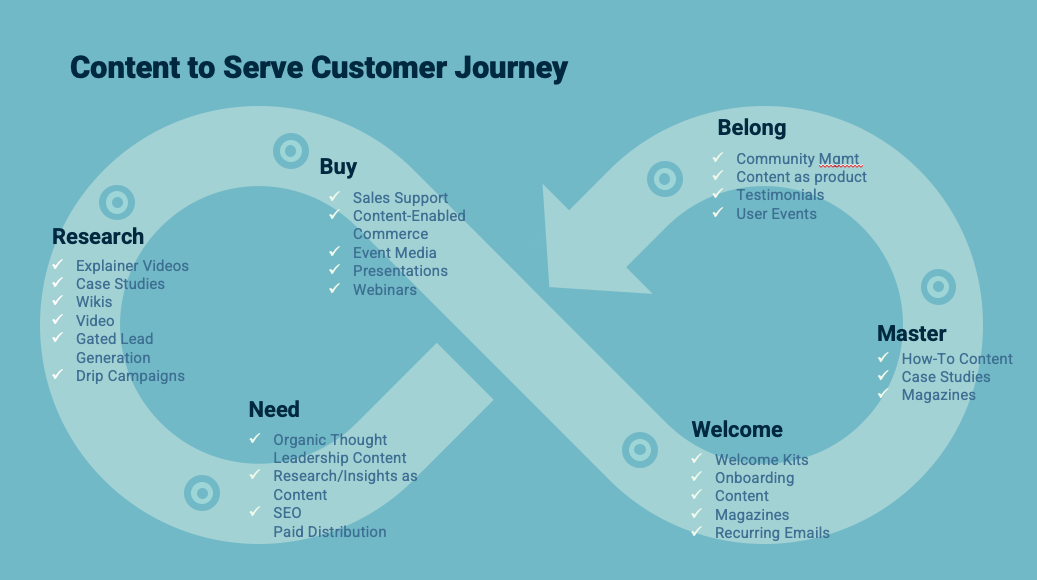
We write a lot about the customer journey—because we know how important it is. Imagine an infinity loop to show a customer’s life cycle. With the right content marketing, you can help prospects become leads, convert them to customers, and focus attention on them so you create a loyal relationship.
Old Truth: Relationships matter.
New Truth: Relationships are everything.
“It goes without saying that it is vital to build relationships with customers founded on trust,” Balis wrote.
In March 2020, Edelman conducted a global consumer study and found that 60% of people were turning more and more to the brands they were absolutely sure they could trust. Why? According to Richard Edelman, CEO of Edelman, trust is a “game changer for brands because it addresses people’s fears about personal safety, most notably vulnerability on health, financial stability, and privacy.”
That’s why it’s critically important to form genuine connections with your customers, listen to their needs and opinions, and help them find solutions for their problems. Without your customers, your business would not exist.
Old Truth: Marketing is important for growth.
New Truth: Marketing is at the center of the growth agenda for the full C-suite.
We’ve noticed this to be true with several of our clients. As Balis said, “marketing has been elevated within the C-suite as a driver of digital transformation, a key leader of the customer journey, and the voice of the consumer—all of which are of paramount importance to other functional leaders.”
A 2019 report from McKinsey & Company suggests that high-growth companies are seven times more likely to have a chief marketing officer who fosters robust and collaborative partnerships across the C-suite. Why? Because the CMO makes sure that the rest of the C-suite understands how marketing is driving growth and serving the company’s broader goals and objectives, the report says.
Takeaway: Balis said it best: “Marketing now has the opportunity to seize an ongoing central role in the dialogue, thereby driving the organization’s broader growth and innovation agenda.” To read the full article, and Balis’s seven other new rules, click here.

By Rex Hammock, CEO
We are living in historic times. But how historic and timely, we don’t know.
However, one thing is certain: Now is the best time to record and preserve these times. Now is the best time in history to use technology to record photography, video and audio with quality unimaginable a decade ago.
You don’t know when history happens until it happens.
At Hammock, we have written thousands of pages of content originally planned and used for a print or video or podcast project that later evolved into a “thought leadership” essay or a video documentary project that helped carry forth the company’s story.
You never know when history will reveal itself.
Many of the early masters of what we today call content marketers understood how to use the various forms of media of their day to first capture an event and context. After his mega-success as an automaker, Henry Ford spent three decades collecting and building a museum of artifacts ranging from the chair in which Abraham Lincoln was assassinated to a Stradivarius violin.
The National Corvette Museum is in Bowling Green, Kentucky, known worldwide as the home of the Corvette. Every Corvette in the world since 1981 has been assembled at the General Motors Bowling Green Assembly Plant just a quarter-mile from the National Corvette Museum. Even the priceless, historic one that fell through a sinkhole.
Not only does the Computer History Museum in Mountain View, California, display the technology that was used in the process of creating the computer, but also the individual creators of the technology can still often be found speaking at an event related to their passion.
My Point: Today is a great time to preserve your company’s or organization’s history and future. And that’s not just what you think happens during a pandemic. Preserve the history and context and resilience of any event through which you are living and working or witnessing.
Tell the story of the small stories, and large.
One day, such histories will preserve and inspire another period of historic times.
Image: Getty
About Hammock Healthcare Idea Email | This post is part of Hammock’s award-winning Idea Email series. Idea Emails are sent every other week and share one insightful marketing idea. Idea Email comes in two flavors: Original and Healthcare. To subscribe to the original Idea Email (general marketing ideas), click here . To subscribe to the Healthcare Idea Email (healthcare marketing ideas), click here.

By Rex Hammock, CEO
Image: Getty
About Hammock Healthcare Idea Email | This post is part of Hammock’s award-winning Idea Email series. Idea Emails are sent every other week and share one insightful marketing idea. Idea Email comes in two flavors: Original and Healthcare. To subscribe to the original Idea Email (general marketing ideas), click here . To subscribe to the Healthcare Idea Email (healthcare marketing ideas), click here.
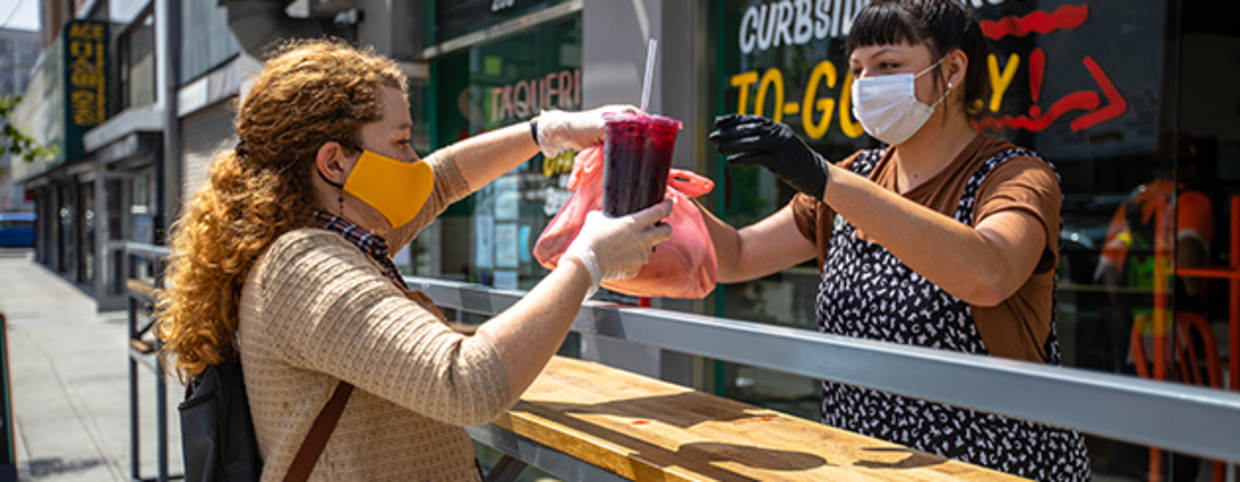
By Rex Hammock, CEO
The past year’s pandemic has been both a challenge and an opportunity for small businesses—and large businesses. While stories of business failure seem never-ending, there also have been inspiring stories of businesses pivoting to success.
Even a gigantic business like Google found new ways to remind us it does more than search. It finds users who need solutions, not just destinations to locate. Then it uses its search skills to find the solution.
Shoppers don’t just turn to Google for things they want to buy on the web—they also want to know what’s nearby.
The Knowledge Exchange
In 2020, Google helped drive more than 2 billion direct connections, including phone calls, requests for directions, messages, bookings and reviews for U.S. businesses. Google has seen an increase in online research by people who use it before heading out to a restaurant or to get takeout. The company recently found that:
66% of dining consumers said they used it to find food and beverage information during the pandemic.
57% of dining consumers said they discovered food and beverage information during the pandemic via online ads.
45% of viewers said they watch YouTube to see a product demo before buying.
YouTube viewers said they are 2 times more likely to go to a store or shop online to buy something they saw on YouTube versus the competitive average.
Searches on Google Maps for “curbside pickup” have increased 9,000% year over year in the U.S.
Searches on Google Maps for “discounts” have grown globally by more than 100% year over year.
Searches on Google Maps for “gift shop” have grown globally by more than 60% year over year.
We may not all be Google or have Google’s resources. But we can think like Google. We can seek client or customer challenges—and then use our skills to solve them.
(Source: Google. Used with permission)
Image: Getty
About Hammock Healthcare Idea Email | This post is part of Hammock’s award-winning Idea Email series. Idea Emails are sent every other week and share one insightful marketing idea. Idea Email comes in two flavors: Original and Healthcare. To subscribe to the original Idea Email (general marketing ideas), click here . To subscribe to the Healthcare Idea Email (healthcare marketing ideas), click here.
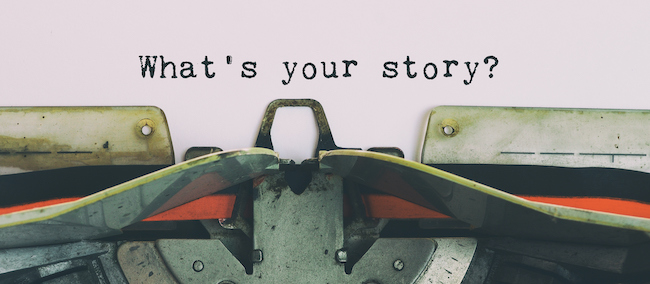
By Rex Hammock, CEO
For several years, Hammock Inc. had a message on the wall of our office lobby wall that said: “Your Story Starts Here.”
We thought then—and still do—that using stories is the best way for individuals (and corporations and associations and … ) to connect with the marketplaces they serve.
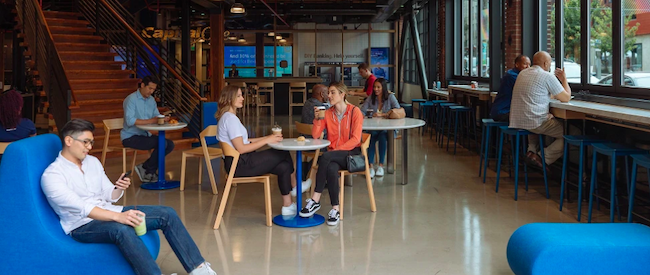
By Rex Hammock, CEO
We write a lot about the role customer- and content-driven media can serve as a foundation for building deep, engaging relationships between customers and shoppers, owners and members, and members and organizations.
Until recently, however, I had not considered the relationship potential of a bank like Capital One Café. That is, however, until I listened to the “Audible Original” book Caffeine: How Coffee and Tea Created The Modern World. According to its author, Michael Pollan, caffeine has a “unique ability to entertain, inform, and perform in a world where an estimated two billion cups of coffee are consumed every day.”